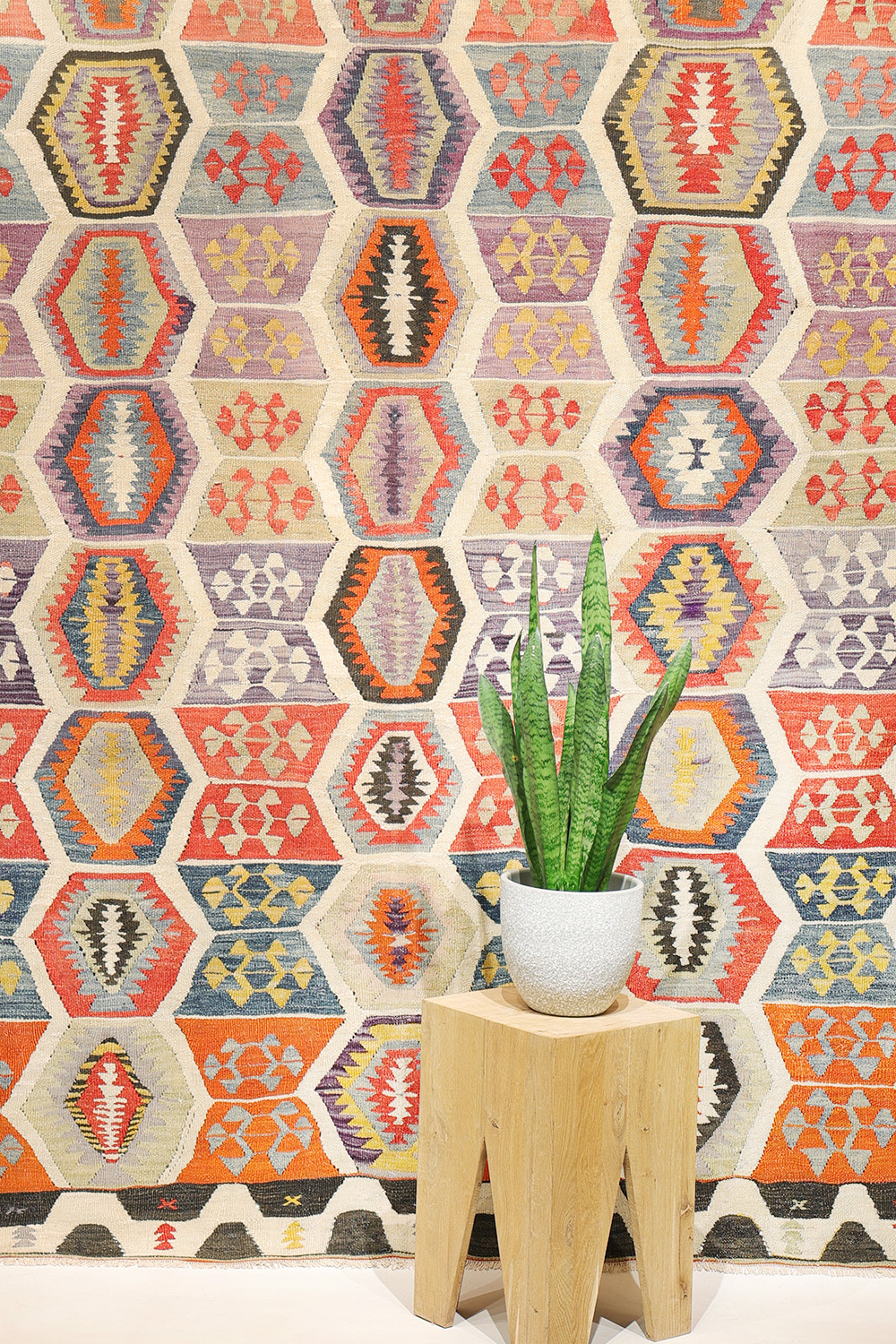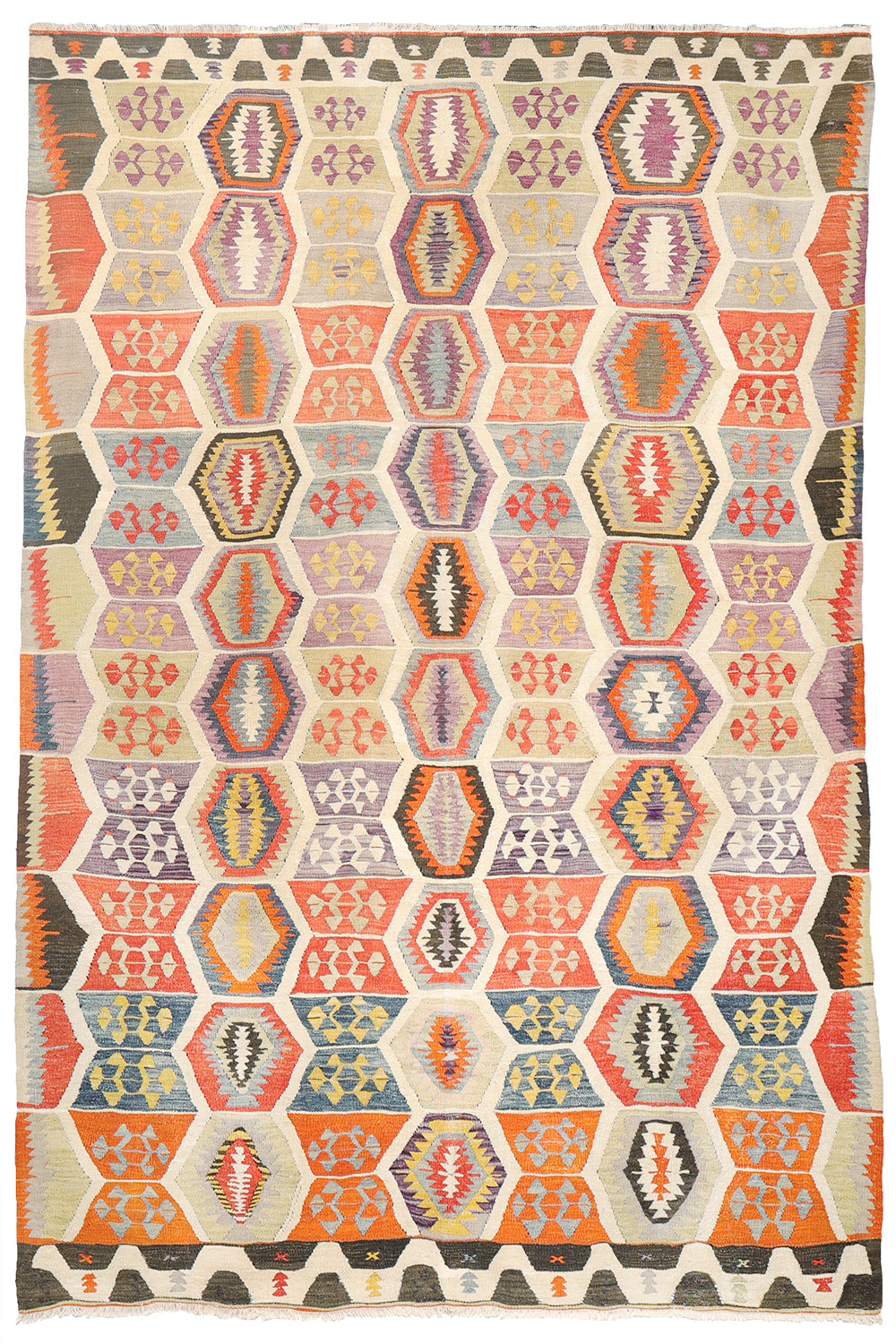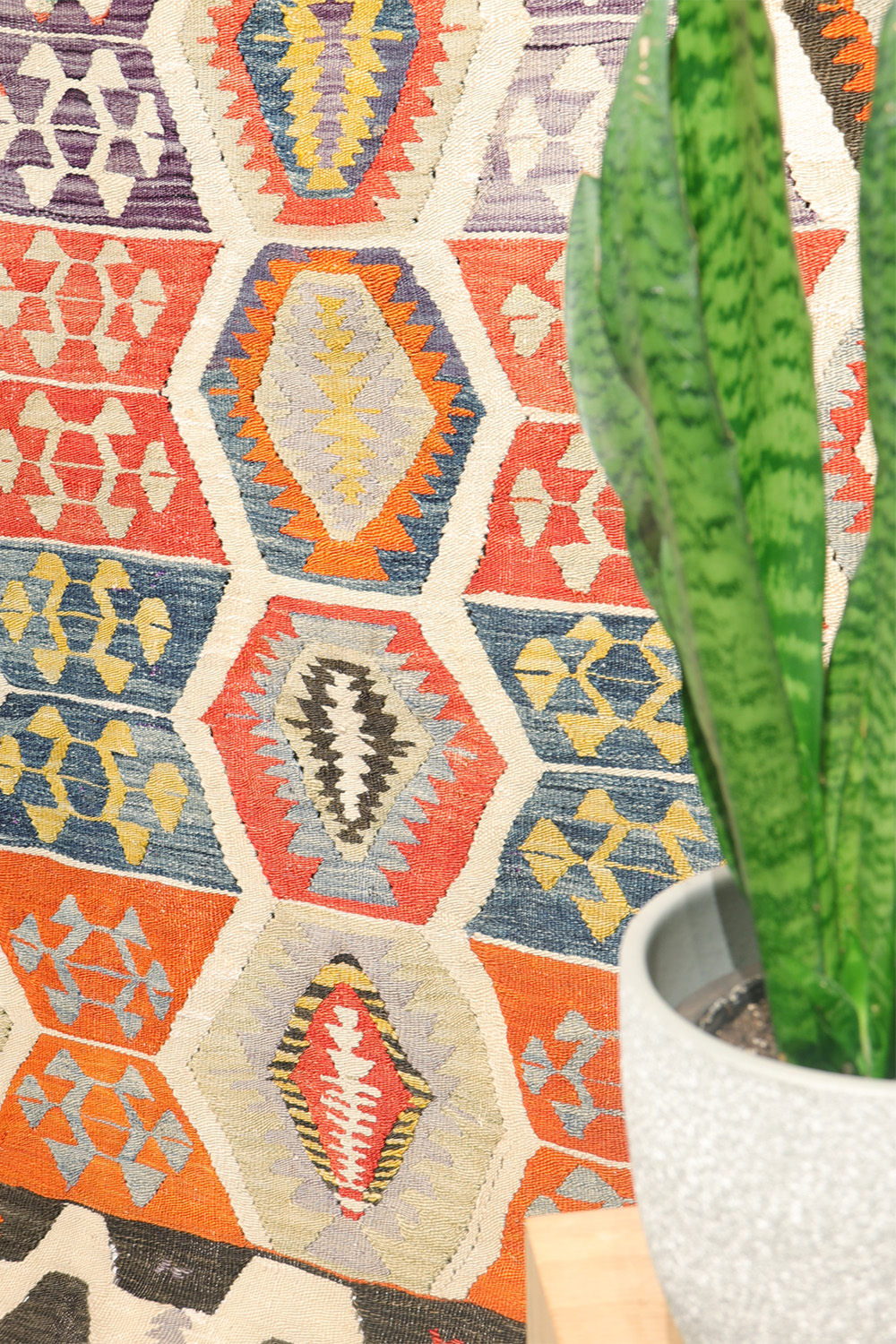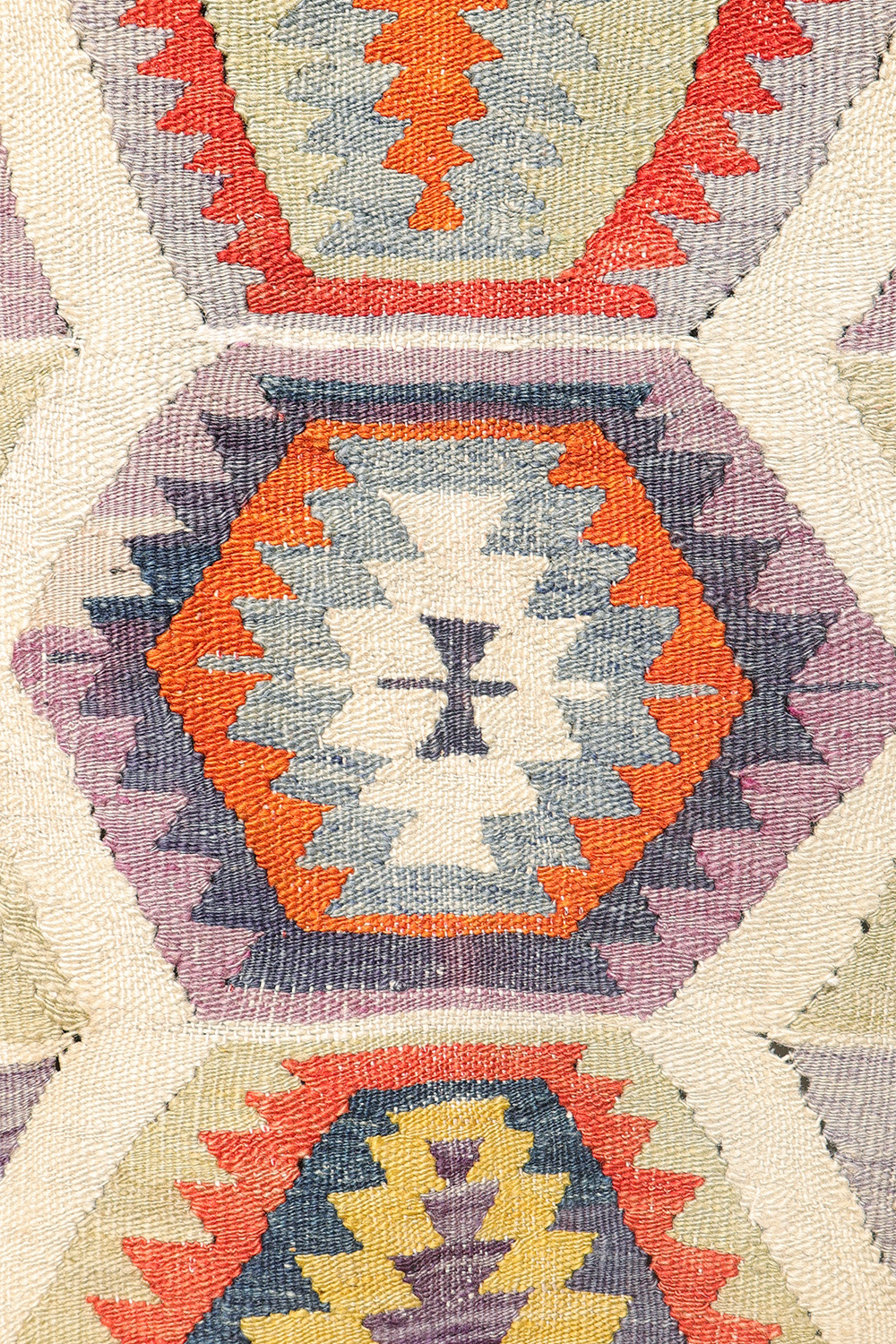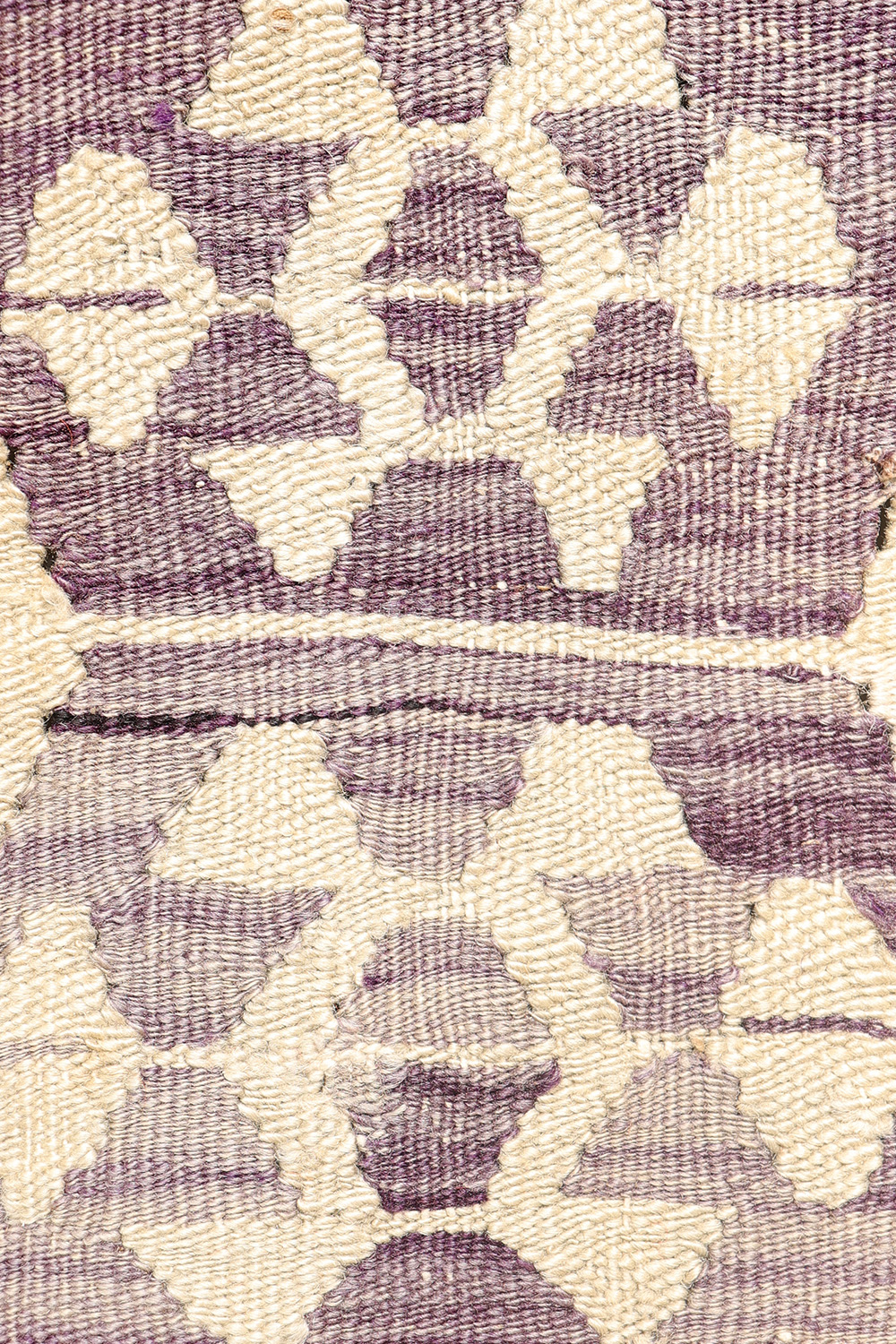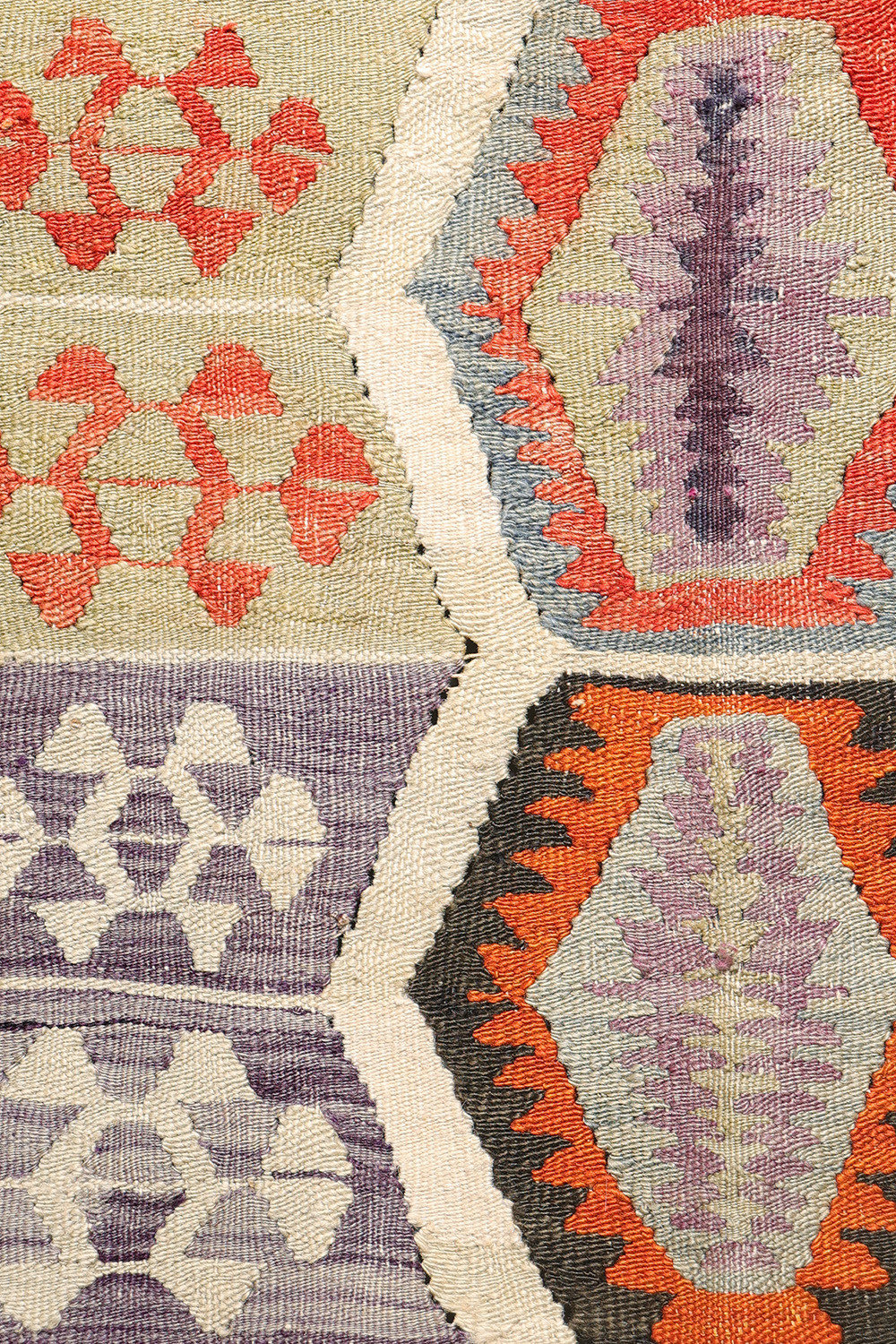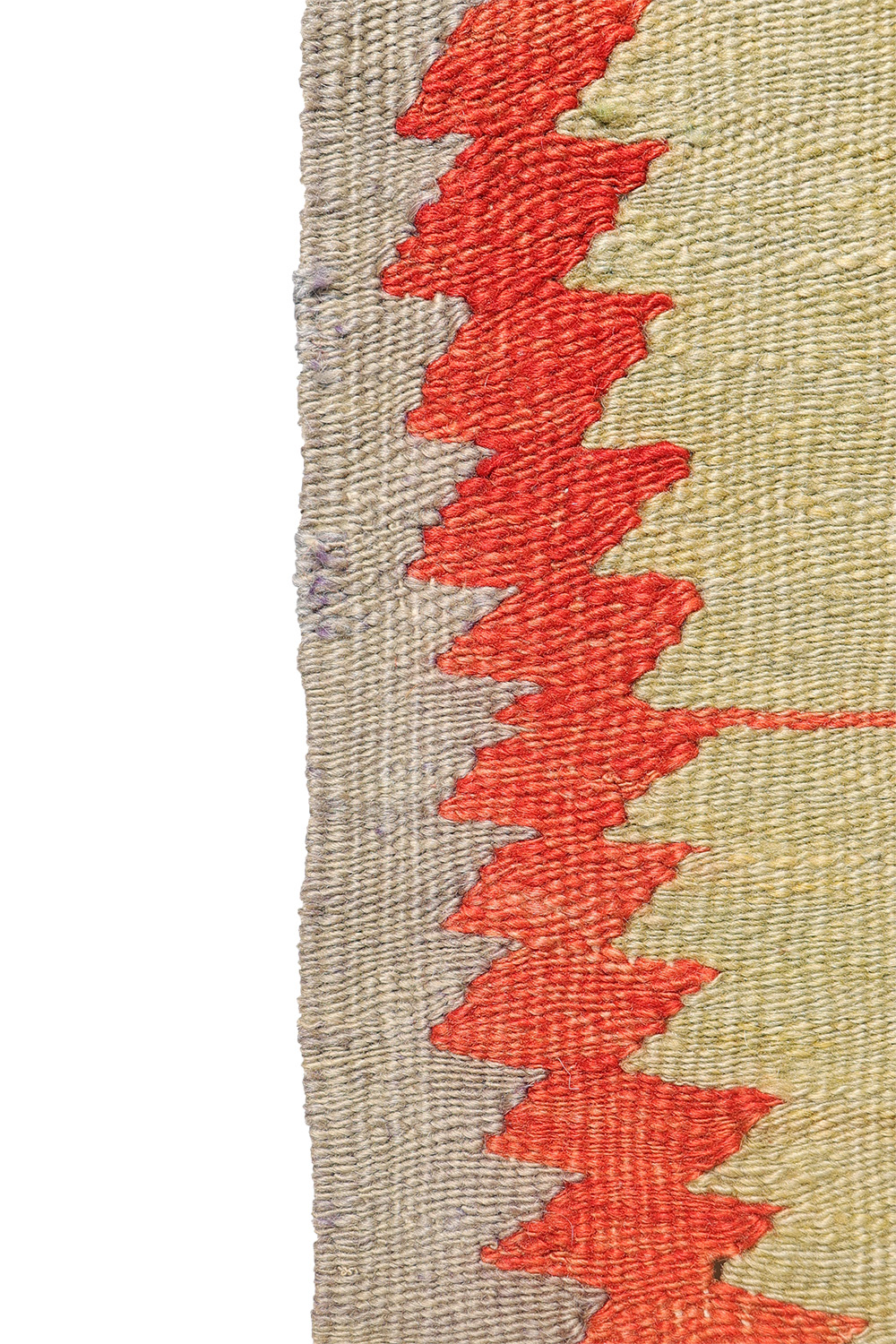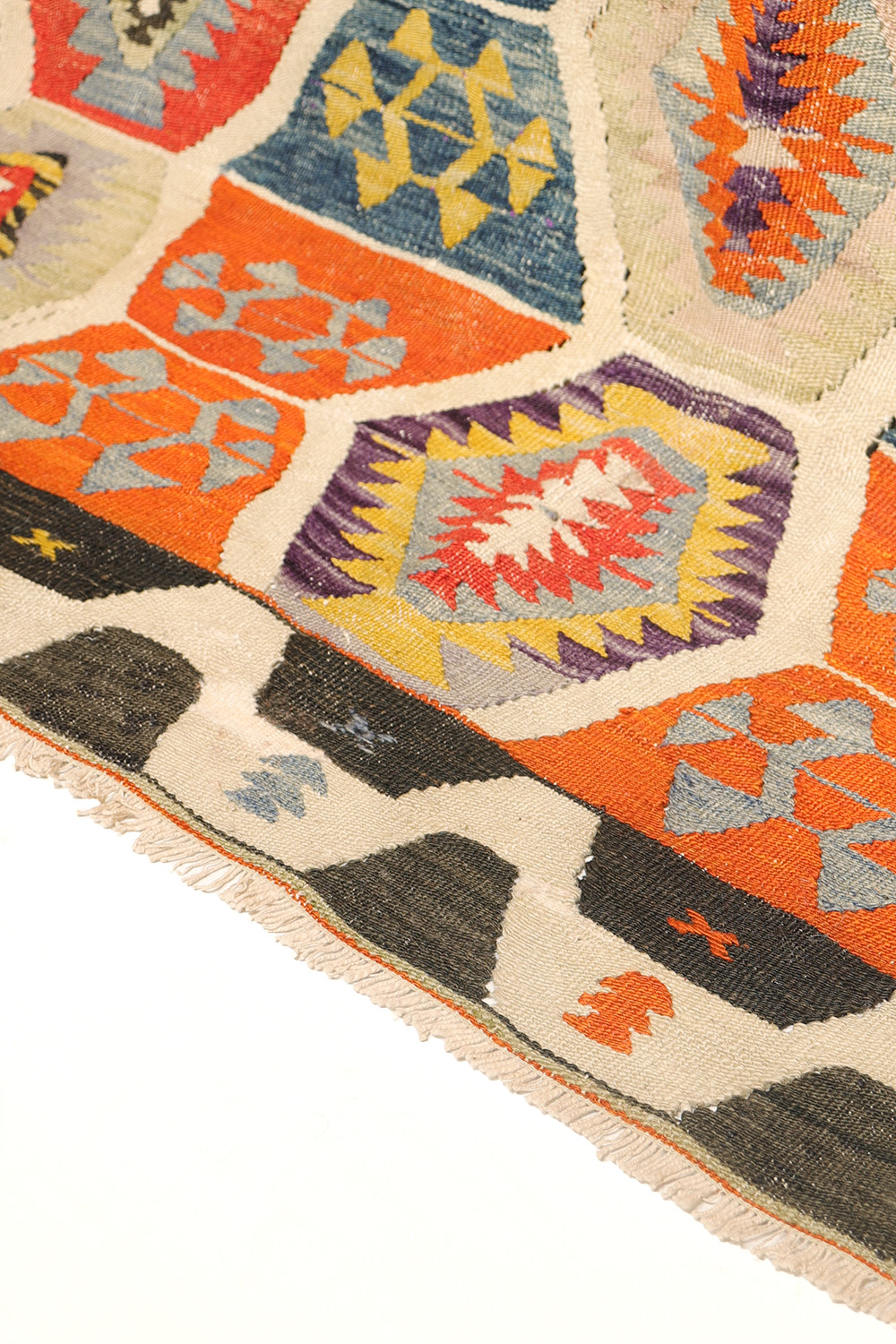2,500.00 €
Superb Early 20th-Century Sutlegen Kilim – Anatolia
This exceptional antique kilim from Suteglen, dating from the early 20th century, is a stunning example of Anatolian village weaving. Its main design features three vertical columns of hexagons: the two outer columns appear to mirror each other, while the central one introduces a contrasting pattern. But look a little closer — and you’ll discover a world of subtle improvisation.
Though the outer columns seem identical at first glance, the weaver has cleverly introduced variations in proportion, color, and form — adding a personal, creative touch to the symmetry. This quiet playfulness is part of what makes the piece so compelling.
The secondary motifs and borders continue the hexagonal theme, echoing the central structure while adding complexity. All dyes used are natural, and for the black areas, the weaver has used goat’s hair instead of the usual sheep’s wool, lending texture and depth to the darker elements.
A truly remarkable piece, full of detail, character, and craftsmanship.
Material: 100% hand-spun sheep wool and goat hair (black areas)
Size: 260×185 cms
Origin: Sutlegen, Turkey
Date of weaving: 1920s
Kilims or Gilims are flatwoven textiles with a woollen weft on a woollen, goat hair or cotton warp. There are many different techniques and designs. The weaver normally works within a tradition of techniques, motifs and designs specific to a particular area or ethnic group. The designs relate to her natural surroundings, protection, fertility and the harmony of family relationships. Each weaver adds something from her own creativity and sense of composition. Kilims are often woven as part of a marriage dowry and can be used to create many different objects like storage bags, horse-blankets, baby carriers, blankets and wall and floor coverings.
This kilim was hand-woven on a simple loom by a village or nomadic weaver for her own use. Probably the weaver used wool from her own sheep. The wool was first cleaned, then hand-carded, hand-spun and finally dyed by hand, often using natural dye materials like roots, nuts, berries, fruits, flowers and plants. Kilims from the last quarter of the twentieth century mostly use synthetic dyes. This kilim would have taken many months to complete.
All our kilims selected in the country of origin and are professionally washed and restored before we import them directly from Iran, Turkey and Afghanistan. Natural patina and charming imperfections in design and colour (abrash) are highly valued characteristics of hand-woven kilims.
1 in stock
Additional information
| Weight | 6 kg |
|---|
Subscribe and receive the lastest news
